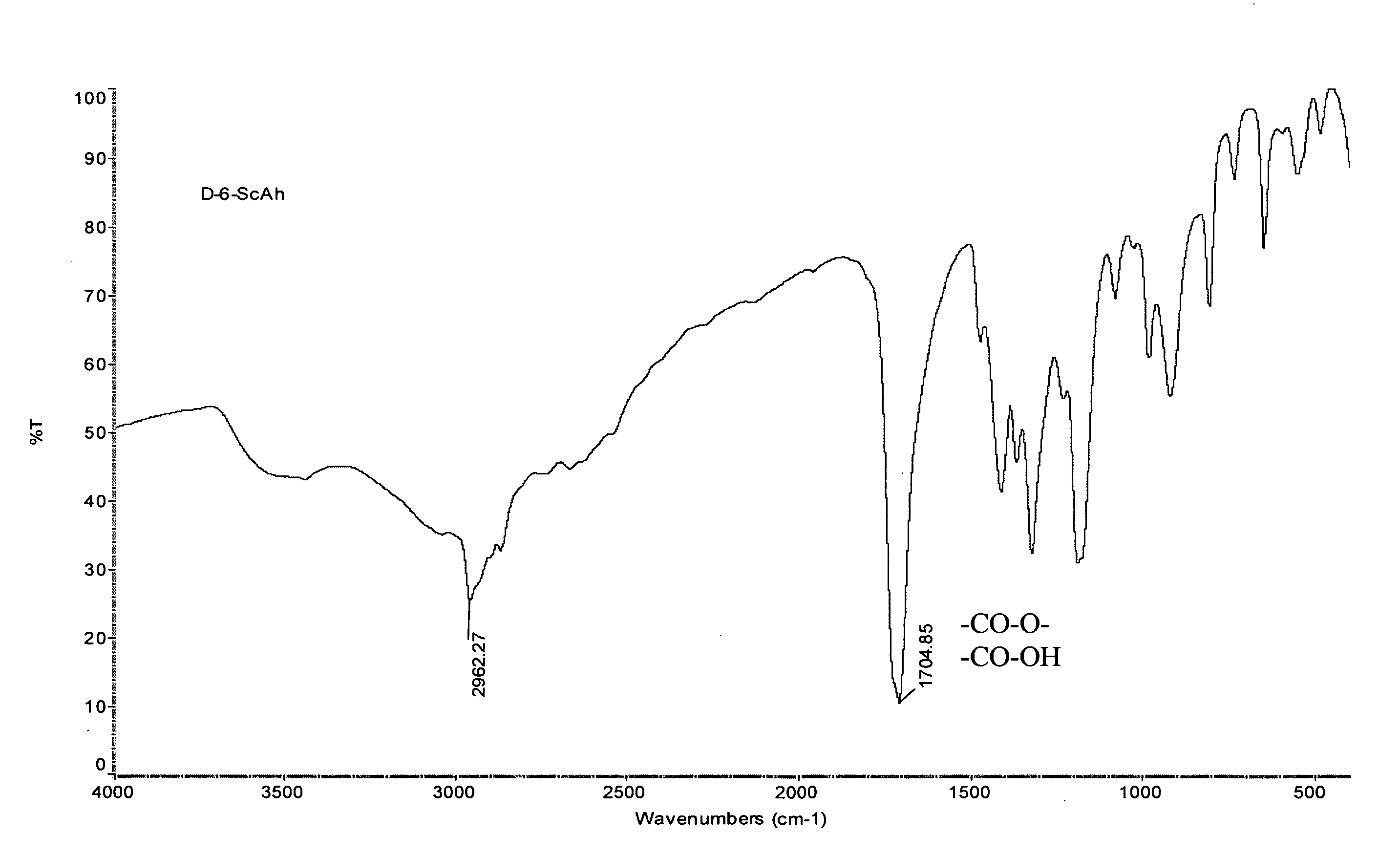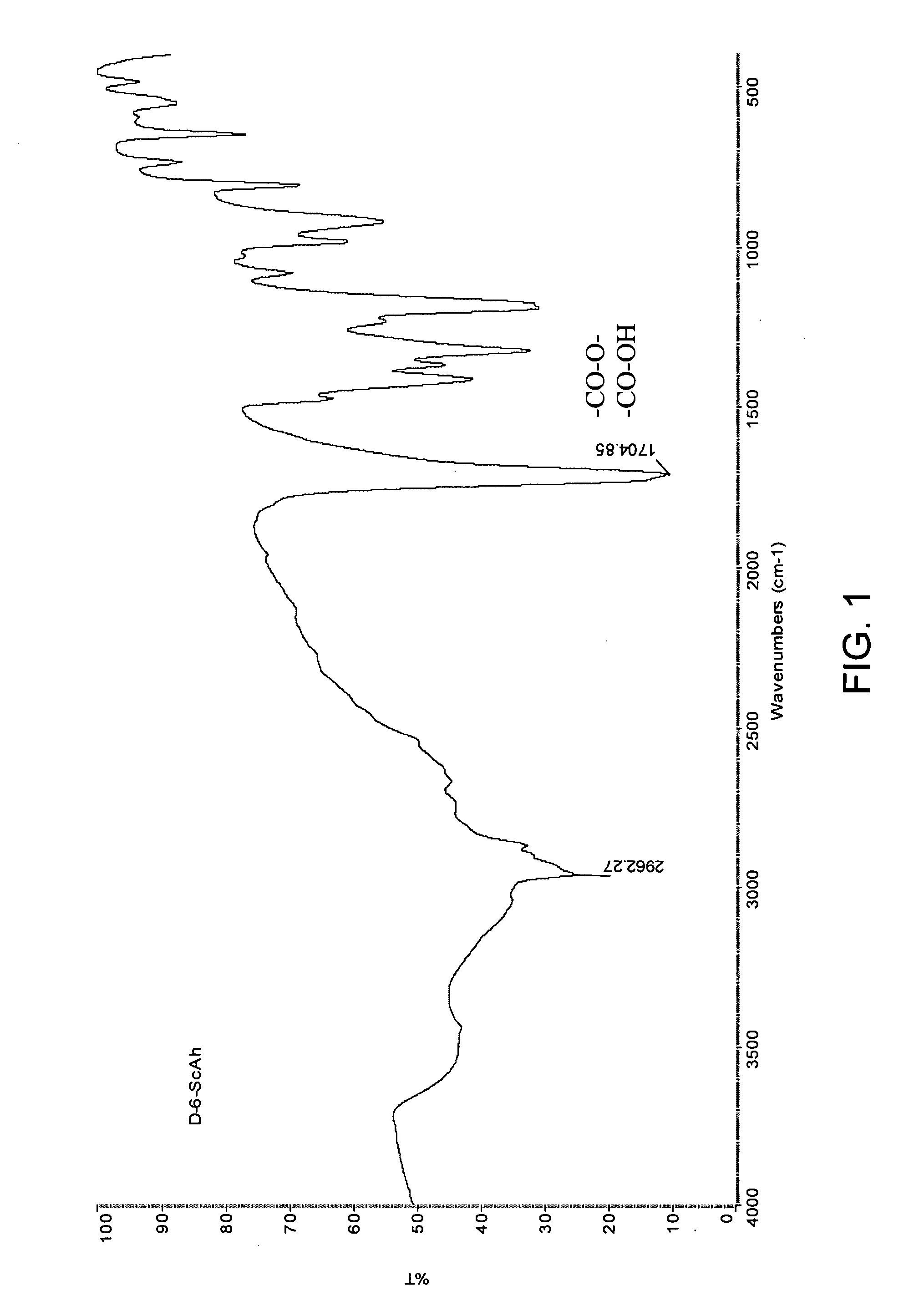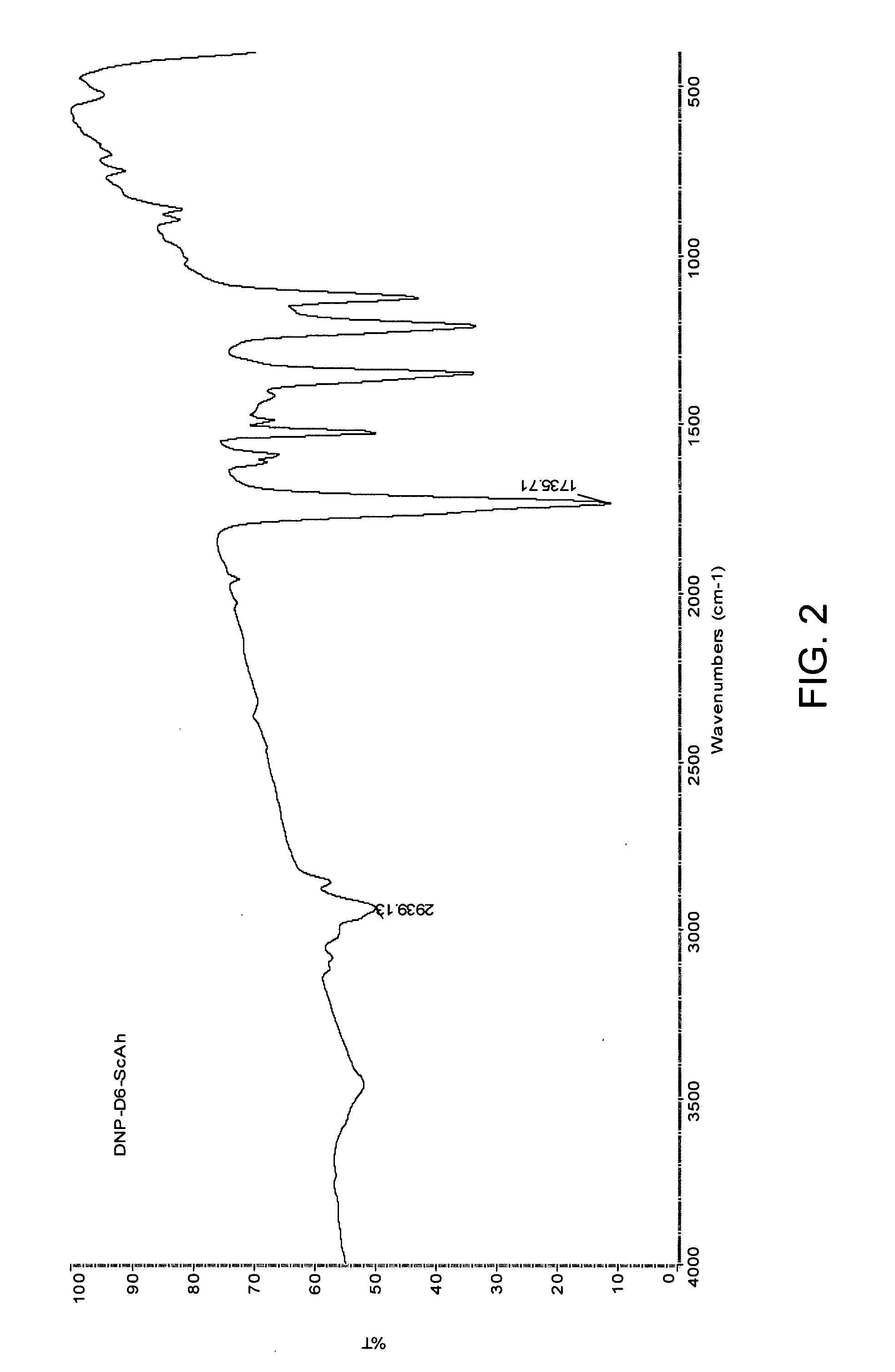Alkylene-dicarboxylate-containing biodegradable poly(ester-amides) and methods of use
a biodegradable, alkylenedicarboxylate technology, applied in the direction of osteosynthesis devices, prosthesis, blood vessels, etc., can solve the problems of high molecular weight poly(succinic amide) synthesis using traditional polycondensation methods, low temperature pc (ltpc) in solution or interfacially, and low molecular weight poly(ester amides) that form brittle films, etc., to achieve the effect of hydrolytic degradation rate ra
- Summary
- Abstract
- Description
- Claims
- Application Information
AI Technical Summary
Benefits of technology
Problems solved by technology
Method used
Image
Examples
example 1
Synthesis of Invention PEAs
[0150] As the first stage of synthesis, a variety of new diester-di-acids (or alkylene-dicarboxylates) of structural formula (III) have been fabricated by interaction of diols with cyclic aliphatic five or six-member anhydrides, such as maleic, succinic and glutaric anhydrides. The general scheme of alkylene-dicarboxylate synthesis is depicted in reaction Scheme 2 below:
[0151] As the second stage of synthesis, various active di-(p-nitrophenyl) esters of alkylene-dicarboxylates of structural formula VI have been fabricated. The reaction was accomplished by interaction of di-acids formed in the first stage (Formula III) with p-nitrophenol in the presence of different condensing agents.
wherein R5 can be selected from (CH2)2, (CH2)3, CH═CH; and R6 can be selected from (CH2)3, (CH2)4, (CH2)6, and (CH2)8.
[0152] As the third stage of synthesis, the invention poly(ester amides) were synthesized by solution active polycondensation of compounds of Formula VI ...
example 2
Monomer Synthesis
1. Synthesis of α,ω-alkylene Dicarboxylates of Structural Formula III.
[0153] Diester-diols derived from five-member anhydrides: alkylene-disuccinates (or O,O′-bis-succinyl diols of structural Formula III, where R5=(CH2)2) and alkylene-dimaleates (where R5=(cis-CH═CH)) can be prepared as follows.
[0154] Interaction of succinic and maleic anhydrides with diols according to Scheme 2 was carried out in refluxed benzene or toluene without using any catalyst. This procedure is illustrated by synthesis of 1,6-hydroxyhexyl-disuccinate as shown in reaction Scheme 4 below:
[0155] Diester-di-acids were purified by re-crystallization from benzene. Their yields are rather high and elemental analysis coincides well with calculated values, as shown in Table 1. Products were also characterized by Fourier Transform Infrared (FTIR) Spectroscopy and a typical spectrum of a diester-di-acid for compound 1,6-hydroxyhexyl-disuccinate, which is shown in FIG. 1, is in accordance with th...
example 3
[0158] Unsaturated α,ω-alkylene dicarboxylates based on maleic acid (compounds 1.5-1.8 in Table 1) afford a new avenue to synthesis of unsaturated poly(ester-amides) (UPEAs)—a new class of biodegradable polyamides.
Synthesis of α,ω-alkylene-diglutarates (Where R5=(CH2)3) of Structural Formula III
[0159] Synthesis of di-acid-diesters on the basis of six member glutaric anhydride and α,ω-diols was carried out in a manner similar to that shown in reaction Scheme 5 below, or in general Scheme 2 herein:
[0160] Initial attempts to obtain the anticipated product by interaction of 2 moles of glutaric anhydride with 1 mole of diol in refluxed benzene or toluene without any catalyst were unsuccessful and showed no conversion. The intended products were obtained in nearly quantitative yields only after using p-toluenesulfonic acid as a catalyst, a result that indicates much lower reactivity of six-membered anhydrides than five-member analogues succinic and maleic anhydrides. Yields, elementa...
PUM
| Property | Measurement | Unit |
|---|---|---|
| molecular weight | aaaaa | aaaaa |
| temperature | aaaaa | aaaaa |
| temperature | aaaaa | aaaaa |
Abstract
Description
Claims
Application Information
 Login to View More
Login to View More - R&D
- Intellectual Property
- Life Sciences
- Materials
- Tech Scout
- Unparalleled Data Quality
- Higher Quality Content
- 60% Fewer Hallucinations
Browse by: Latest US Patents, China's latest patents, Technical Efficacy Thesaurus, Application Domain, Technology Topic, Popular Technical Reports.
© 2025 PatSnap. All rights reserved.Legal|Privacy policy|Modern Slavery Act Transparency Statement|Sitemap|About US| Contact US: help@patsnap.com



